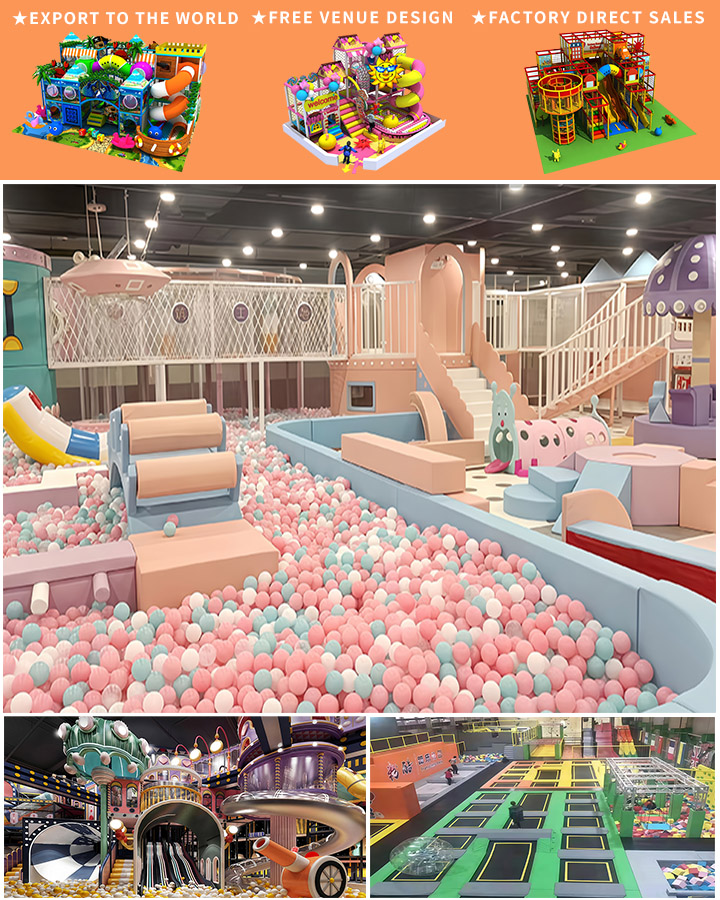Creating a captivating and safe indoor playground for children is a top priority for business owners looking to attract families. The right equipment can turn a simple space into a wonderland of fun and adventure, providing endless entertainment for kids and peace of mind for parents. This article will explore the key factors in selecting high-quality, engaging, and safe commercial indoor playground equipment for children.
Understanding the Importance of Indoor Playgrounds
Indoor playgrounds are more than just recreational spaces; they are environments where children can develop crucial physical, social, and cognitive skills. Physically, they help improve coordination, balance, and strength. Socially, these spaces encourage interaction, teamwork, and communication among children. Cognitively, play stimulates creativity, problem-solving abilities, and imagination.
Key Considerations for Choosing Indoor Playground Equipment
When selecting equipment for a commercial indoor playground, several factors must be taken into account to ensure safety, durability, and engagement:
1. Safety First
Safety is paramount when it comes to children’s play areas. Ensure that all equipment meets national and local safety standards. Look for features such as:
- Soft, impact-absorbing surfaces to prevent injuries from falls.
- Rounded edges and corners to minimize the risk of cuts and bruises.
- Stable structures that can withstand rough play without tipping over.

- Non-toxic materials and coatings to protect children from harmful substances.
2. Age Appropriateness
Different age groups have varying needs and capabilities. It’s essential to offer a range of equipment suitable for various age brackets:
- Toddlers (1-3 years): Simple, low-risk structures like soft play shapes, ball pits, and small slides.
- Preschoolers (3-5 years): Interactive elements like climbing walls, mini trampolines, and sensory play areas.
- School-Age Children (6-12 years): More challenging and complex structures such as multi-level play systems, obstacle courses, and interactive digital games.
3. Durability and Maintenance
High traffic in commercial settings means that equipment will need to withstand constant use. Choose materials known for their longevity and ease of maintenance:
- High-density foam for cushioning is durable and easy to clean.
- Metal and plastic structures should be rust-resistant and made from sturdy materials.
- Regular inspections and maintenance routines are vital to keep the equipment in top condition.
4. Engagement and Variety
The best indoor playgrounds offer a mix of activities to keep children entertained:
- Physical Activities: Trampolines, climbing frames, and slides to burn off energy.
- Creative Play: Areas for arts and crafts, pretend play, and imaginative activities.
- Educational Elements: Interactive exhibits, puzzles, and learning games that combine fun with education.
5. Aesthetic Appeal
An inviting and visually appealing environment can make a significant difference in attracting visitors. Bright colors, themed areas, and creative designs can enhance the overall experience. Consider incorporating popular themes like jungles, space, or fantasy worlds to create an immersive atmosphere.
6. Accessibility
Ensure that the playground is accessible to children with different abilities. Features like ramps, wider slides, and wheelchair-accessible zones demonstrate inclusivity and cater to a broader audience.
Conclusion
Selecting the perfect indoor playground equipment requires careful consideration of safety, age appropriateness, durability, engagement, and aesthetic appeal. By focusing on these aspects, commercial indoor playground operators can create a fun, safe, and welcoming environment for children and their families. Investing in high-quality equipment not only ensures the well-being of young visitors but also establishes a reputation as a premier destination for family fun.




